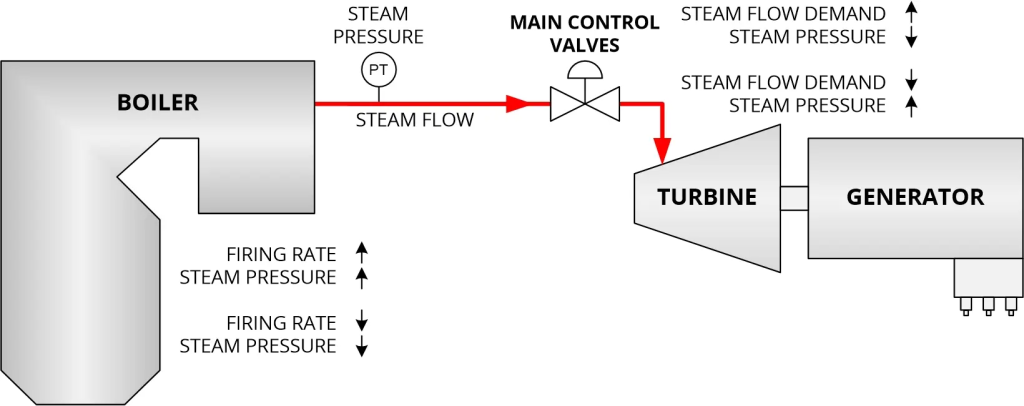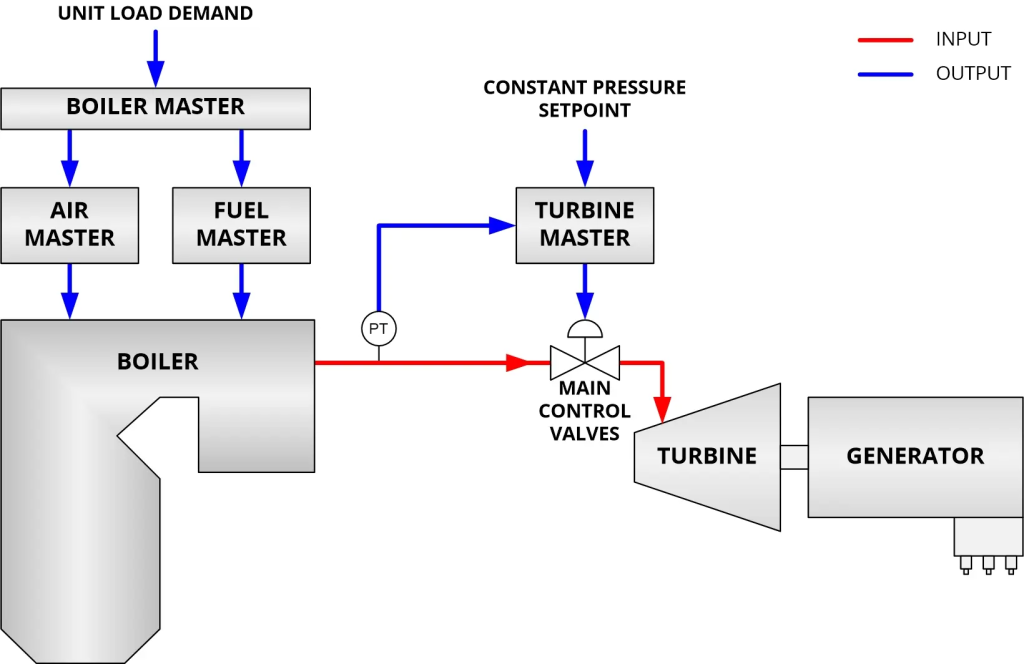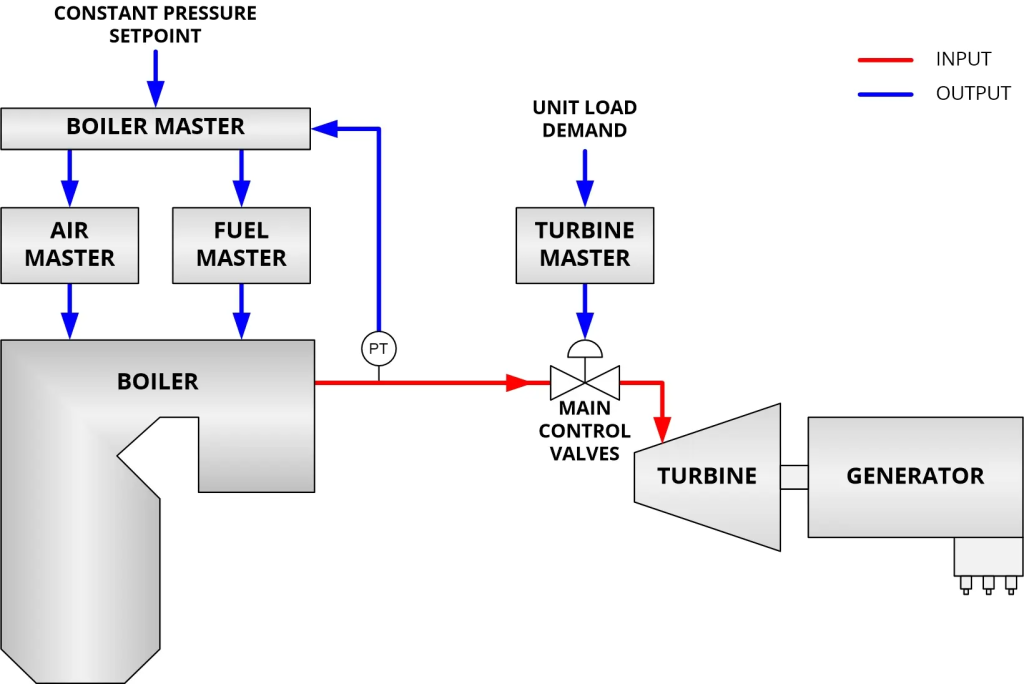
Boiler steam pressure is controlled to maintain the desired throttle pressure at the high pressure (HP) turbine inlet. The boiler outlet pressure is slightly higher than throttle pressure because of the pressure drop through the main steam line. Often the throttle pressure is the parameter that is monitored and controlled. However, it can be thought of as the control of the boiler outlet pressure.
Throttle steam pressure is primarily controlled by varying the boiler firing rate or controlling the steam flow to the turbine (see Figure 1):

Although firing rate and steam flow demand are the primary controllers of steam pressure, pressure may change due to other conditions, including:
The operator sets the throttle pressure control. Throttle pressure indicates the balance between boiler steam production and turbine steam usage. When the boiler produces more steam than consumed by the turbine, throttle pressure increases. When the boiler produces less steam than consumed by the turbine, throttle pressure decreases. The throttle pressure is steady when the boiler steam production matches the turbine steam flow. Its pressure setpoint is either constant or variable over the unit operating range. The throttle pressure is controlled by either the turbine (Turbine Follow) or boiler (Boiler Follow)
Turbine Follow mode is active when the turbine control is in AUTO and the boiler control is in MANUAL. The throttle pressure is maintained at the setpoint by modulating the turbine governor control valves. The mode is called ‘Turbine Follow’ as the turbine is following the boiler through steam flow. Turbine Follow control mode is illustrated in Figure 2. As boiler firing rate increases, steam flow increases, causing an increase in throttle pressure unless the turbine governor valves are opened.
For example, when the boiler firing rate decreases, steam flow decreases. Turbine valves must decrease (close down) in order to hold throttle pressure at the setpoint. Anticipation control action (feedforward) partially moves the turbine governor valves in the proper direction as soon as the boiler firing rate setpoint changes. Feedforward action reduces throttle pressure changes when the boiler firing rate changes. Turbine Follow control mode can quickly change turbine steam flow and unit generation. It is typically a ‘backup’ throttle pressure control, active during unit runback and low startup firing.

Boiler Follow mode is active when boiler control is in AUTO and turbine control is in AUTO, controlling unit generation (MW). This mode can also be active when the boiler is in AUTO and the turbine is in MANUAL. The throttle pressure is maintained at the setpoint by modulating the boiler firing rate. This is illustrated in Figure 3. The mode is called ‘Boiler Follow’ as the boiler is following the turbine through steam flow.
For example, when turbine governor control valves open, steam flow increases, and throttle pressure decreases. The boiler firing rate must increase to match the higher boiler steam production with the higher steam flow. Conversely, when turbine governor control valves close, steam flow decreases, and throttle pressure increases. The boiler firing rate must decrease to match lower boiler steam production with lower turbine steam flow. Fuel delivery delays, large thermal mass, and energy storage slow the boiler response to firing changes. Ten minutes for a firing change to reach a steady-state is not unusual. Strong anticipation action coordinates boiler firing changes with turbine steam flow changes.

Boiler Follow mode with the turbine in AUTO (controlling MW’s) is usually the preferred method of controlling throttle pressure. This allows the system to respond to changes in electrical load. As load increases, the turbine governor control valves open to provide more energy to the turbine-generator shaft to meet the load change, causing the steam flow to increase and throttle pressure to decrease. The boiler firing rate will then automatically increase to match the higher steam flow.